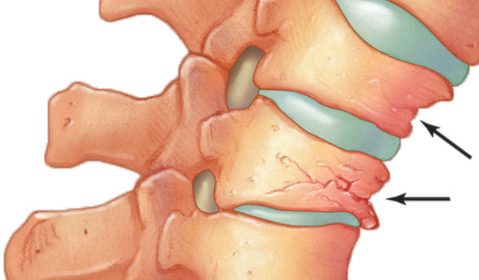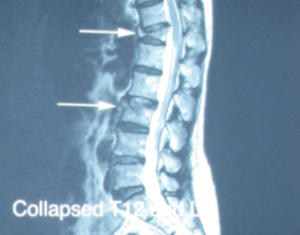
2017-08-11

Understanding spine osteoporotic fractures
67-year-old Ms. Guan fell down due to dizziness in June 2016. After entering a government hospital, she arranged an X-ray and found that the thoracic spine was fractured. After that, the hospital did not arrange any treatment, but followed up with the usual observation procedures.
Case Sharing
In April of this year, Ms. Guan fell again due to weakness in her feet. X-rays did not see any new fractures in the spine. However, the 12th section of the previous thoracic spine began to sink and lean forward. They gave her painkillers and anti-inflammatory drugs and ask her to go home and rest more. After that, Ms. Guan found that the low back pain became more and more serious day by day. No matter sitting, walking, or standing, the low back pain could not be relieved. Even if the medicine was taken, the pain could not be relieved. The patient came to see the author in May. Because of her medical history and symptoms, it appeared that she fell due to weakness in both feet, and the patient herself suffered from osteoporosis, which caused her spine fracture after the fall.After detailed examination, it was decided to scan the cervical spine, thoracic spine and lumbar spine with MRI. It was found that the patient’s thoracic spine section 12 and lumbar spine section 3 were fractured. The thoracic spine section 12 was particularly severe, with depression, forward tilt, and slight pressure to the central nerve (see Figure -). The severe fracture made Ms. Guan’s low back pain worsened. The author referred the patient to a neurosurgeon for Vertebroplasty. After Ms. Guan completed this minor operation, the back pain that had troubled her for a long time almost disappeared.
Vertebroplasty
Vertebroplasty, commonly known as bone cementing, is a minimally invasive needle hole operation in which artificial bone powder (acrylic adhesive) is injected into the vertebral body where the vertebral body has been fractured, strengthening and consolidating the fragile bones caused by osteoporosis, and reconstructing the vertebral body. The bone shape prevents further deterioration of the sunken vertebrae (see Figures 2 to 5). Suitable conditions for vertebroplasty include (1) persistent low back pain caused by fractures; (2) weak bones, forward spine and kyphosis due to severe osteoporosis; (3) no medicine can help . This minor operation only takes one hour. The patient can go home 24 hours after the operation. No painkillers are required, but anti-osteoporosis drugs must be taken to prevent fractures and subsidence of the spine, disc or other parts.

圖―
The 12 thoracic vertebrae are particularly serious, with depression, forward tilt, and slight pressure to the central nervous system.

圖二

圖三
Vertebroplasty is a minimally invasive operation with a pinhole, injecting artificial bone powder (acrylic adhesive) into the vertebral body

圖四
Vertebroplasty was completed with fractures of the 12th thoracic spine and the 3rd lumbar spine
Data title: Chiropractor Wong Matty
Information and pictures provided by: Dr. Pang (cranial neurosurgeon)
(#) This is an individual case, and the actual results vary from person to person.

 Book an Appointment
Book an Appointment


